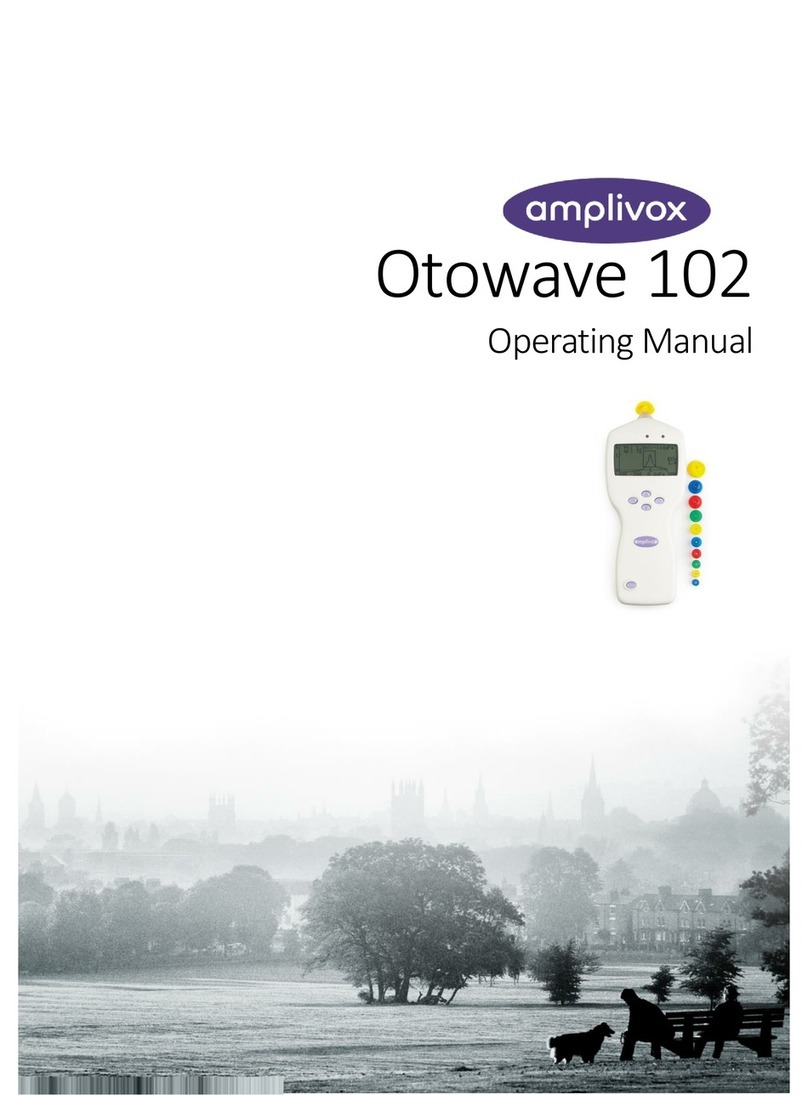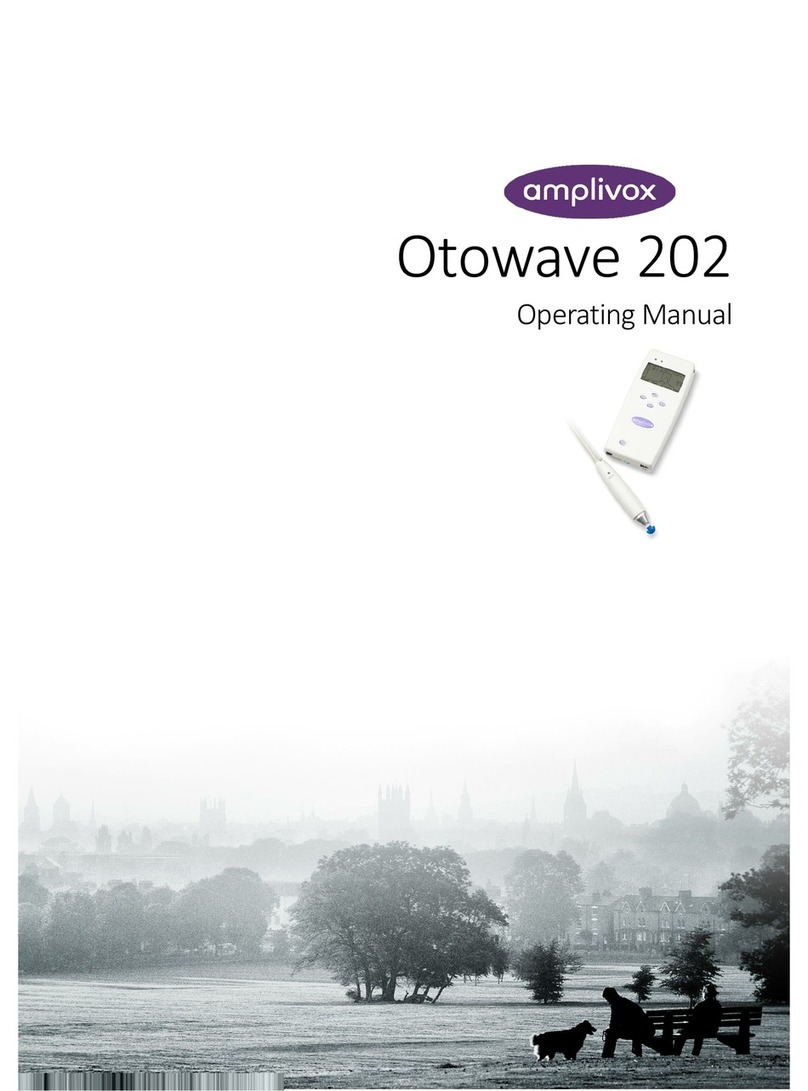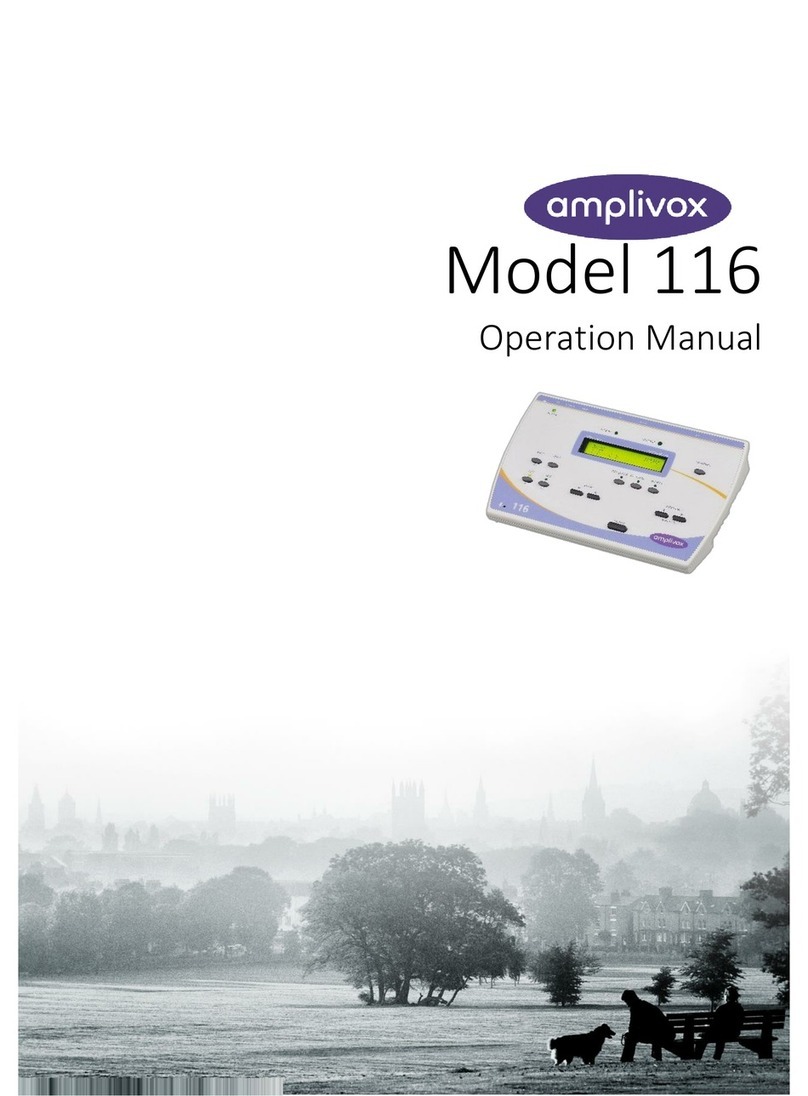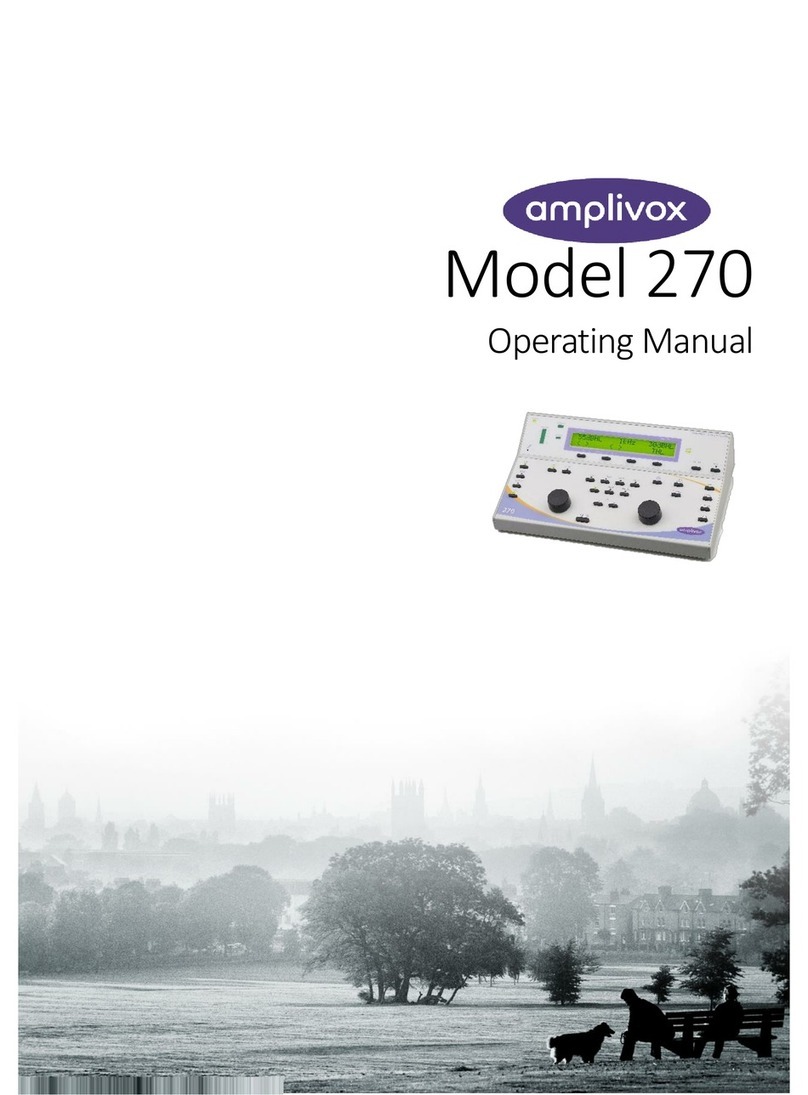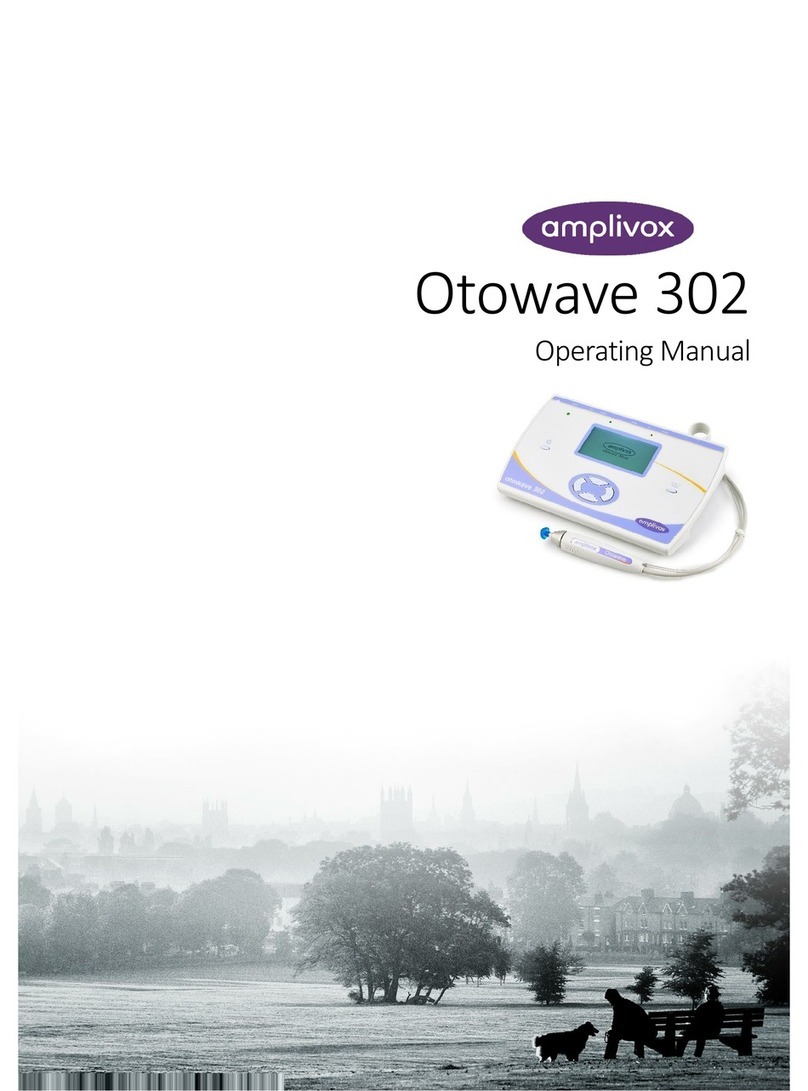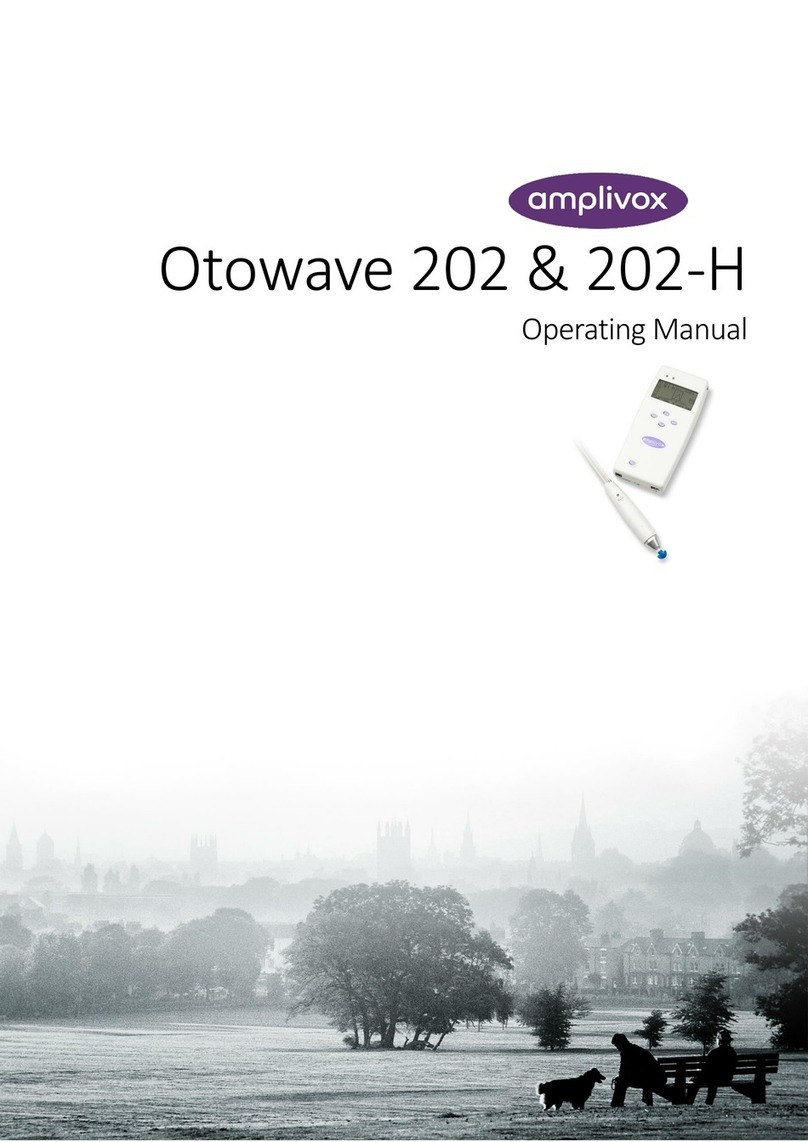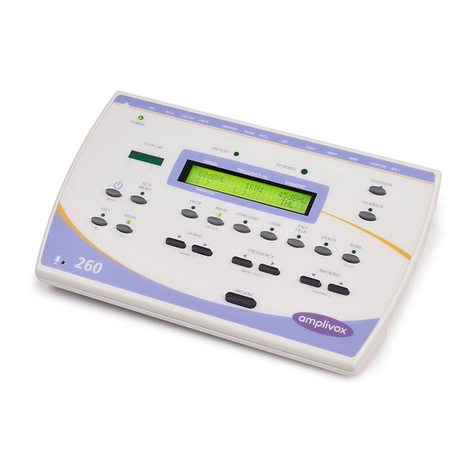IMPORTANT SAFETY INSTRUCTIONS
6 MODEL 170 INSTRUCTION FOR USE
2.IMPORTANT SAFETY INSTRUCTIONS
The Model 170 instrument must be used only by practitioners qualified to perform audiometric
tests. It is intended for use as a screening tool.
2.1. PRECAUTIONS
READ THIS OPERATING MANUAL BEFORE ATTEMPTING TO USE THE INSTRUMENT
To comply with the standards IEC 60601-1 for safety and IEC 60601-1-2 for EMC the audiometer is designed to be used
only with the medically-approved mains adapter supplied, which is specified as part of the equipment. Do not use any
other type of mains adapter with this instrument. Refer to Section 12 for the stock number of the adapter.
The audiometer is for indoor use only and should be used only as described in this manual.
The transducers supplied with the audiometer are specifically calibrated with it; if these transducers are changed
calibration will be required.
Do not immerse the unit in any fluids. See Section 8 of this manual for the proper cleaning procedure for the instrument
and its accessories.
Do not use the instrument in an oxygen-rich environment or in the presence of a flammable anaesthetic mixture or
other flammable agents.
Do not drop or otherwise impact this instrument. If the instrument is dropped or damaged, return it to the manufacturer
for repair and/or calibration. Do not use the instrument if any damage is suspected.
The instrument must be stored and used within the specified temperature, pressure and humidity ranges (see Sections
7 and 9).
Do not attempt to open, modify or service the instrument. Return the instrument to the manufacturer or distributor for
all repair and servicing requirements. Opening the instrument will void the warranty.
2.2. ELECTROMAGNETIC COMPATIBILITY (EMC) CONSIDERATIONS
Medical electrical equipment needs special precautions regarding EMC and needs to be installed and put into service
according to the EMC information provided in Appendix 1. This provides guidance on the electromagnetic environment
in which to operate the instrument.
Portable and mobile radio-frequency (RF) communications equipment can affect medical electrical equipment. The
instrument should not be used adjacent to or stacked with other equipment; if this is necessary the instrument should
be observed to verify normal operation.
2.3. POWER SUPPLY OPTIONS
All other connections must be made before connecting the output lead from the adapter into the POWER input socket
on the back of the audiometer. Switch on the mains supply - the indicator on the adapter and the POWER indicator on
the audiometer will both illuminate green, showing that the instrument is ready for use.
The output from mains adapter is fitted with electronic circuit protection. In case of overload the adapter will shut down
and the indicator will be extinguished. When the fault is cleared the adapter will operate as normal.
The input to the mains adapter is protected with a non-replaceable fuse. If this fails the adapter will not operate.
